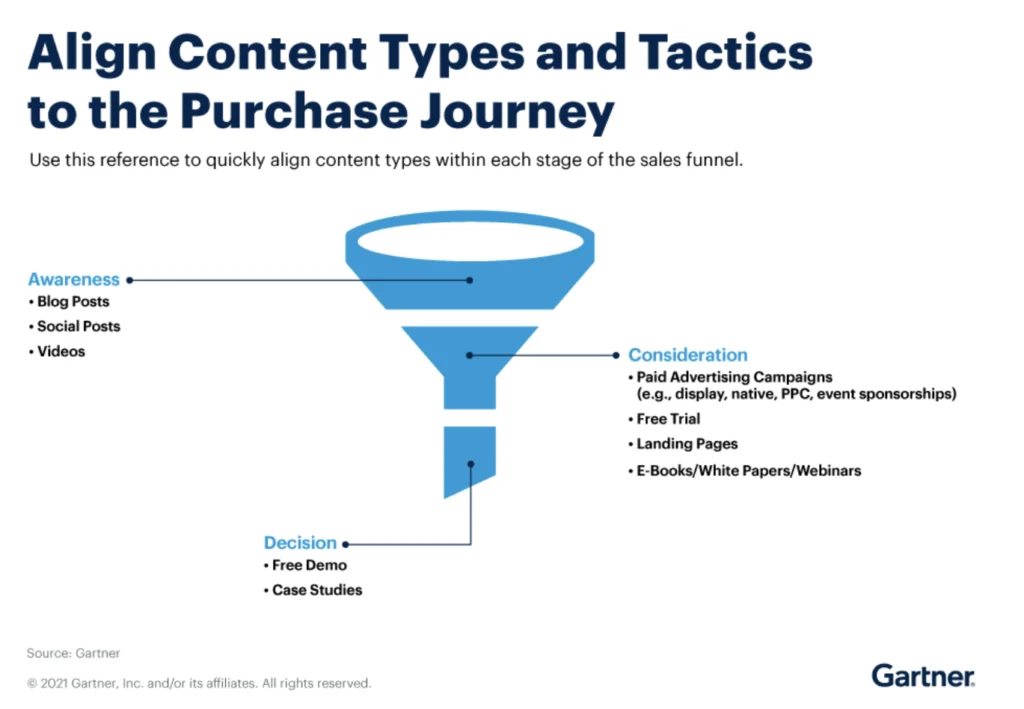How To Build and Run a Killer Demand Generation Campaign
In the 1982 film E.T., a famous scene features the protagonist, Elliot, using Reese’s Pieces candies as alien bait. Because of the film, Reese’s Pieces sales tripled. However, you don’t need to feature your product in a Hollywood hit to increase the demand for your product. Instead, you can use demand generation campaigns to introduce your product to your ideal customer and increase sales.
Learn some demand generation campaign ideas and how to create a successful strategy.
Key Takeaways:
- Demand generation is creating interest in your products, often by alerting consumers of a need they didn’t know they had
- Establish goals before starting your campaign, so you have a benchmark to aim for in your campaign and metrics to use for measuring your success
- Demand generation requires a wide variety of marketing techniques to increase awareness, engage your audience, and generate leads
What Is Demand Generation?
Demand generation is generating interest in your product. It’s about increasing awareness, creating a sense of urgency, and educating your audience about your solutions. Often this requires first letting your customers know about problems they weren’t aware they had.
One example of demand generation is a marketing automation software company that begins its marketing campaigns by alerting marketers to the amount of time they waste on manual tasks. Since manual marketing has been popular for so long, many marketers might not realize that method isn’t ideal. However, once they read content from the automation company, they will recognize a need for speedier processes and reach out to that business for more information about its products.
Demand Generation vs. Lead Generation
Many people conflate the demand generation step with other marketing stages, like lead generation. While lead generation is the natural next step after creating demand, it requires a different strategy. Lead generation works off the assumption that the consumer already recognizes a need and how a specific product fills that lead.
Meanwhile, demand generation is a long process that starts by addressing consumers with little or no prior knowledge of your products and spans through the buyer journey’s awareness, nurturing, and conversion stages.
How Do You Know if Your Demand Generation Campaign Was Successful?
Demand generation aims to increase interest in your brand, which eventually leads to more sales. You know your demand generation campaigns were successful if you are attracting more leads that ultimately turn into customers because that indicates the leads you are reaching are potential buyers.
However, you might not realize the full impact of your demand generation campaign until weeks or even months later, when the customer finally completes the sales cycle. More immediate metrics you can use to measure your campaign success include:
- Engagement rate
- Website or social media content impressions
- Leads generated
- New social media followers
- Campaign clicks
How Do You Build a Demand Generation Campaign?
Use these five steps to create a demand generation campaign to increase brand awareness and attract quality leads.
Step 1: Connect Your Sales and Marketing Departments
When your sales and marketing teams aren’t aligned, several problems often occur, including:
- Sales doesn’t nurture all the leads marketing sends to them
- Marketing doesn’t attract quality leads for sales to convert
- Both departments have siloed data
- Workflows are disjointed and cause delays or miscommunication
You need both teams to collaborate for your demand generation campaign to work. By uniting the teams, you also unit their knowledge and data about customers and their journey. For example, understanding why leads purchase during the sales process is one of the most important factors marketing teams should consider when creating product demand.
You can see up to 38% higher sales win rates when you align sales and marketing.
Step 2: Know Who Your Audience Is
You can use your combined data to build accurate buyer personas with both sales and marketing aligned. These are diagrams of potential customers, demographics, and pain points they often experience.
Customer journey mapping helps you create a buyer persona as you can use real customer interactions to identify behaviors and demographics common among your loyal customers.
Once you have your buyer persona created, spend time getting to know their needs through surveys, online research, and A/B testing. These insights help you create relevant marketing content and strategies to relate to your target customers to increase the quality of leads you generate.

Image from Hootsuite
Step 3: Unify Your Branding
Demand generation is a comprehensive strategy because you want to reach as much of your target audience as possible. That means using multiple channels, media formats, and engagement methods. However, you risk running a disjointed campaign when you diversify your strategy to this extent.
Keep your branding and message consistent across channels so that your audience sees one primary message. You can create a unified brand using a content management system that shows your campaigns on one dashboard. Also, create a consistent look, such as similar colors, fonts, and slogans, to connect your content and create a unified and seamless omnichannel experience.
Step 4: Invest in Content Marketing
About 97% of marketers rely on content marketing as an essential marketing strategy component. The top-performing content includes:
- Video
- Blog posts
- Storytelling and case studies
You can distribute this content over social media, emails, and your website. When you optimize the content for search engines, you increase the chances of your content appearing during the customer research phase. You can also guest post on relevant websites to get your content in front of audiences that don’t realize they need a solution. This generates interest in your products.

Image from Gartner
Step 5: Measure Your Results
Brand awareness isn’t easy to measure since it doesn’t always directly end in sales. Instead, you need to set goals, like leads generated or increased traffic. When you reach those benchmarks, you know you are successful.
About 67% of marketers use lead generation as their primary metric for measuring their results. Meanwhile, 75% of marketers report revenue growth from their marketing efforts.
Analyzing how people interact with your content and what steps they take next also helps you optimize the process. For example, if people aren’t responding to specific types of content or you lose them after a certain point, you can work on those areas to ensure they have a seamless experience.
Get Started on Your Next Demand Generation Campaign
Televerde’s demand generation services use the most updated consumer data insights and extensive marketing channels to create effective strategies. As a result, you will see higher quality leads and convert more prospects into customers through our process.
Contact us to learn more about our demand generation solutions.


